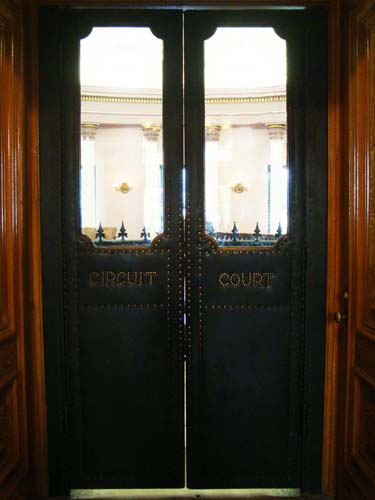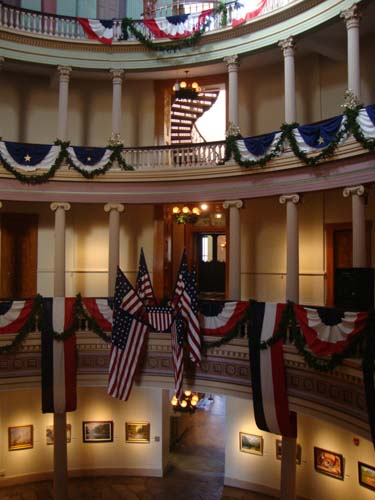These doors aren’t just the entrance to a court room in St. Louis; they represent the struggle of slavery and the fight that Dred Scott took up to gain his freedom. Different doors take on different meanings. Are they a means of access? Or are they a barrier? Dred Scott would soon find out that he would struggle through many barriers, before gaining his freedom in an unexpected way.
The Old Courthouse in St. Louis was home to one of the most important cases ever tried in the U.S: the Dred Scott Decision. Dred Scott was a slave who fought for his freedom all the way up to the Supreme Court. In the end, the court decided that he was personal property and should remain a slave, however this case caused further tensions in the country and was one of the factors that pushed us towards the Civil War.
Who was Dred Scott?
Dred Scott was born into slavery in 1799 as property of the Peter Blow family. He was brought to St. Louis in 1830 and sold to Dr. John Emerson due to his master’s financial problems. Emerson took Scott to places like Illinois and the Wisconsin Territory, areas that prohibited slavery under the Missouri Compromise of 1820. Dred Scott met slave Harriet Robinson on one of these trips, and Dr. Emerson purchased Harriet so she and Dred could marry and be together. Dr. Emerson married Irene Stanford during a stay in Louisiana and returned to St. Louis in 1842. He died the following year and Mrs. Emerson hired Dred Scott and his wife out to other masters.
St. Louis Trials
In 1846, Dred and Harriet Scott filed a suit for their freedom against Irene Emerson. They filed suit under the basis that they had previous residence in a free territory (since they had moved around with Dr. Emerson) and Missouri courts supported the “once free, always free” doctrine. What I find ironic is the Blow family, Dred Scott’s original owners, financially backed him for this trial. Due to a legal technicality, a new trial was ordered, and in 1850, the jury decided in the second trial that the Scotts should be given their freedom. Mrs. Emerson appealed to the Missouri State Supreme Court, and in 1852 they reversed the ruling. They stated that “Times now are not as they were when the previous decisions on this subject were made.” Slavery was becoming a divisive issue nationwide, and for political reasons, the court returned Dred Scott back to Mrs. Emerson.
The Federal Case
In 1854, Dred Scott filed suit in the St. Louis Federal Court agains John F.A. Sanford, Irene Emerson’s brother and executor of the Emerson estate. The case was decided in favor of Mr. Sanford, so Dred Scott appealed to the U.S. Supreme Court.
The Supreme Court Case
On March 6, 1857 (more than ten years after Dred Scott filed his first case), Chief Justice Roger B. Taney delivered the majority opinion (seven of nine justices) that Dred Scott should remain a slave. They also ruled that the Missouri Compromise of 1820 was unconstitutional.
Dred Scott’s Freedom
In addition to the fact that Dred Scott’s former master supported his quest for freedom, Irene Emerson remarried in 1850 to a northern congressman opposed to slavery. After the Supreme Court decision, her husband turned Dred Scott over to the Blows who gave Dred and Harriet Scott, and their children, freedom in May 1857. Why her new husband did not do this sooner, I am unsure. Dred Scott died in September 1858 in St. Louis and never lived to see the start of the Civil War or the subsequent end to slavery. But his case will hardly be forgotten, as it is one of the worst decisions the U.S. Supreme Court ever made.
We poked around in the different rooms of the Old Courthouse, and it was odd to think that I walked on the same floors that Dred Scott walked on as he fought for his freedom less than 200 years ago. The Courthouse is managed by the National Park Service and we met an extremely friendly park ranger who told us all sorts of stories about the building and its history. She also gave us a brochure on the Dred Scott Decision, which I used to summarize the facts for you above.



Thank you for sharing this! Very nicely done. Did you see our new statue? It was dedicated June 8th. (The Dred Scott Heritage Foundation)
I don’t think I did because I was there in late October. I’ll have to check it out if I make it back :)